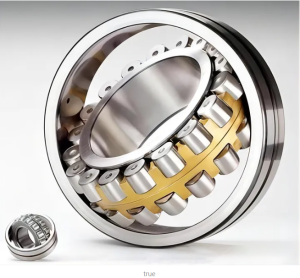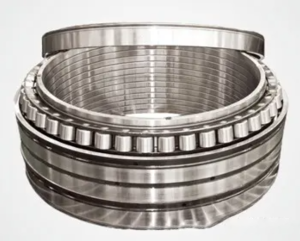Correct Use of Bearings
When using tapered roller bearings, the installation process is a crucial aspect, and improper installation may lead to bearing damage, affecting its normal functioning. Here is an analysis and recommendations for the installation of tapered roller bearings:
1. Analysis of Tapered Roller Bearing Installation Issues:
During the reinstallation of tapered roller bearings, a fault occurs where the small retaining edge fractures, rendering the bearing unusable. Tapered roller bearings consist of an inner ring, outer ring, cage, and rollers. In this fault, the inner ring’s small end retaining edge exhibits continuous intermittent fractures, forming a “sawtooth” pattern.
2. Causes of Small Retaining Edge Fracture in Tapered Roller Bearings:
The primary cause of the fracture is the use of the cold installation method, employing tools such as hammers and copper rods to strike the bearing. This operation may result in abnormal impacts on the bearing cage, causing deformation and guiding rollers to impact the inner ring’s small retaining edge. When the retaining edge exceeds its capacity for impact load, brittle fracture occurs, leading to bearing failure.
3. Correct Installation Method for Tapered Roller Bearings:
Proper installation is crucial to preventing bearing damage. It is recommended to follow these steps for the correct installation of tapered roller bearings:
- Insert the bearing’s small end into the shaft first, using the method of tapping the large end face to install the bearing to the specified position and fix it.
- Depending on the bearing size and operating conditions, choose the appropriate assembly method, such as cold installation or hot installation. In cold installation, try to use an installation sleeve to prevent abnormal impact on other positions of the bearing. If a sleeve cannot be used, place a copper rod against the inner ring of the bearing and gently tap it symmetrically and cyclically in the diameter direction to avoid excessive impact.
- Improve the technical skills of the installation personnel and follow the correct bearing installation requirements to avoid violent operations that could cause bearing damage.
4. Considerations:
- Avoid direct impact on the bearing with hammers or heavy objects during installation to prevent damage.
- In cold installation, use an installation sleeve whenever possible to ensure the perpendicularity of the bearing’s end face and the shaft neck.
- Pay attention to the operating method to prevent the bearing from experiencing excessive impact.
Correct installation is key to ensuring the normal operation and prolonging the lifespan of tapered roller bearings. I hope these suggestions help you install tapered roller bearings correctly for reliable operation.




